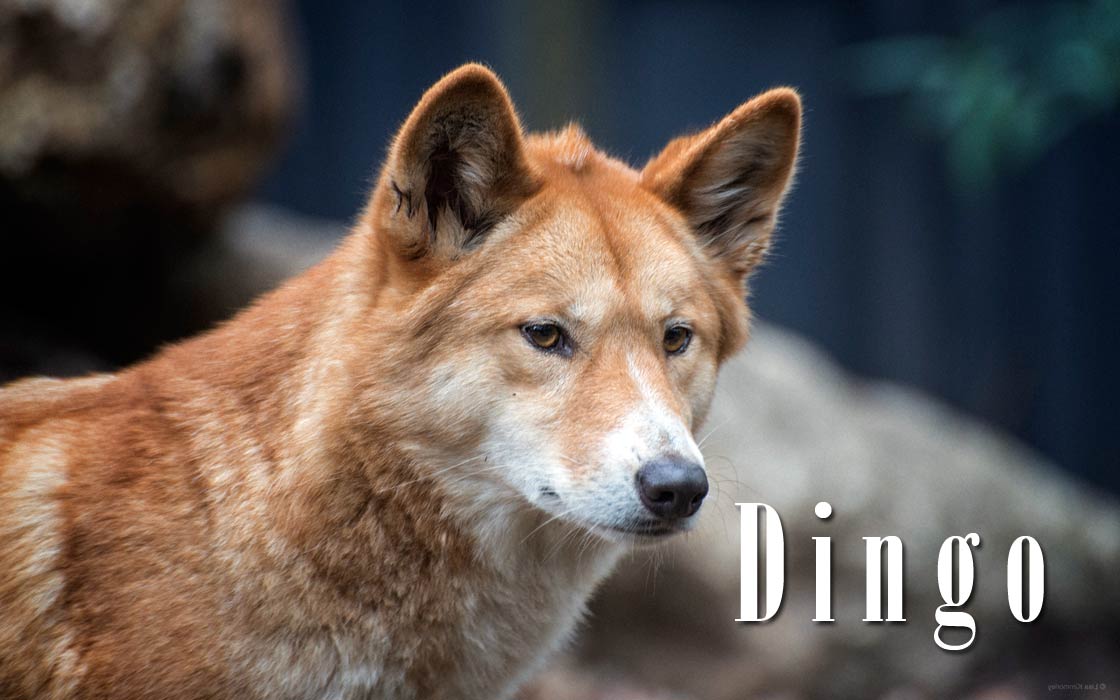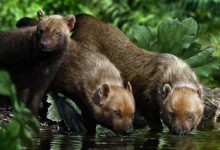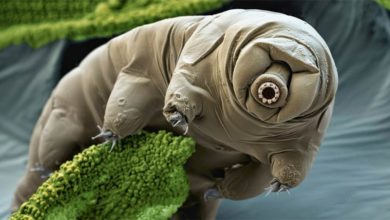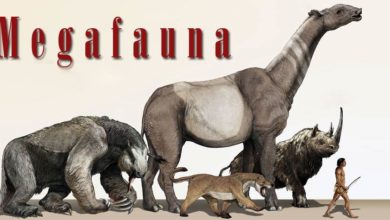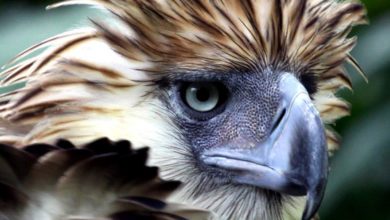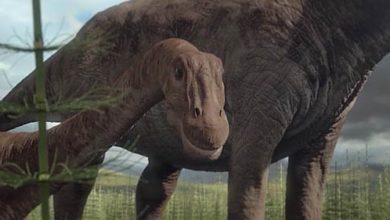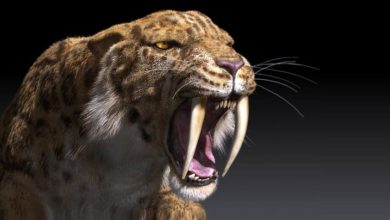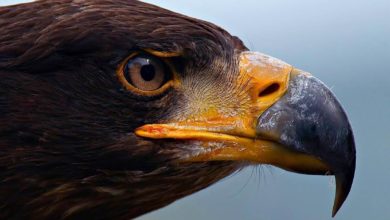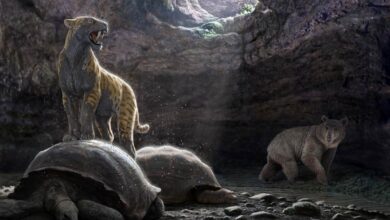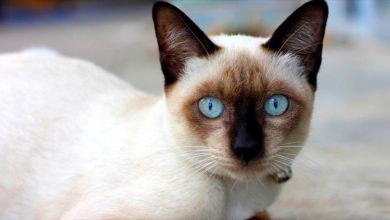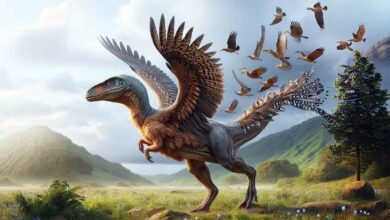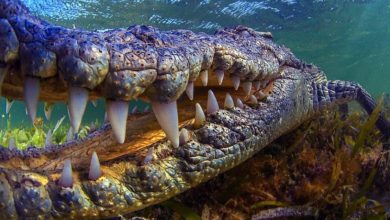Dingo (Canis familiaris, Canis familiaris dingo, Canis dingo)
“Amidst the rugged terrain of the Australian Outback, the Dingo, also known as Canis familiaris, roams freely as a symbol of the country’s untamed wilderness. This fascinating wild dog has a rich and mysterious history, captivating the minds of adventurers, naturalists, and indigenous cultures alike. With its distinctive howl echoing through the night and its unrivaled hunting skills, the Dingo is much more than just a common feral dog. It is a true survivor, adapting to survive in one of the harshest environments on earth and maintaining a place in the hearts and minds of those who know it best.”
The Dingo is a medium-sized, carnivorous wild dog native to Australia. Dingoes have a distinct appearance, with a reddish-yellow coat, pointy ears, and a bushy tail. They are considered one of the largest terrestrial predators in Australia and play a significant role in the ecosystem.
In terms of size, Dingoes typically weigh between 20-30 kilograms (44-66 lbs) and measure about 52 – 60 cm (1ft 8in – 1ft 12in) from their shoulder to the ground. They have a muscular build and are known for their agility and strength.
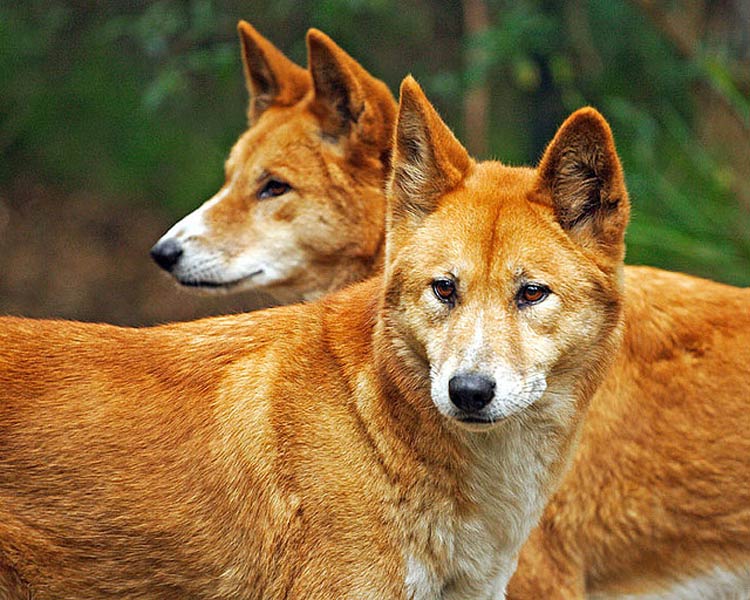
Dingoes are known for their distinctive howl, which they use to communicate with other members of their pack. They are social animals and typically live in packs, although some individuals may also lead solitary lives. They are opportunistic hunters and feed on a variety of prey, including small mammals, reptiles, birds, and even kangaroos.
Dingoes have a fascinating and controversial history in Australia. While they are considered native to the country, they are believed to have originated from domesticated dogs that were brought to Australia by Asian seafarers around 4000 years ago. Today, Dingoes are considered a threatened species, with their populations declining due to habitat loss and interbreeding with domestic dogs.
Overall, the Dingo is a unique and fascinating wild dog that continues to capture the imagination of people from all over the world. Its survival in one of the harshest environments on earth and its important role in the Australian ecosystem make it a species worth learning about and protecting.

Taxonomy
Dingoes (Canis familiaris dingo) are a subspecies of the domestic dog (Canis lupus familiaris) that are native to Australia.
Taxonomically, Dingoes belong to the family Canidae, which also includes wolves, foxes, and other species of domestic dogs. Within the genus Canis, Dingoes are classified as a separate subspecies, Canis lupus dingo, due to their distinctive physical and behavioral characteristics.
The classification of Dingoes as a separate subspecies is supported by genetic and morphological evidence, which suggests that they have been isolated from other domestic dog populations for thousands of years and have developed unique adaptations to the Australian environment.
Despite this, there is ongoing debate among taxonomists about the precise classification of Dingoes, with some researchers advocating for their recognition as a separate species, Canis dingo, rather than a subspecies of the domestic dog.
Dingoes are a distinct subspecies of the domestic dog, with a unique combination of physical and behavioral characteristics that distinguish them from other domestic dogs. The exact classification of Dingoes is a subject of ongoing debate among taxonomists, but they are generally recognized as a separate subspecies of the domestic dog, Canis lupus dingo.
Classification
- Kingdom: Animalia
- Phylum: Chordata
- Class: Mammalia
- Order: Carnivora
- Family: Canidae
- Genus: Canis
- Species: Canis lupus
- Subspecies: Canis lupus dingo
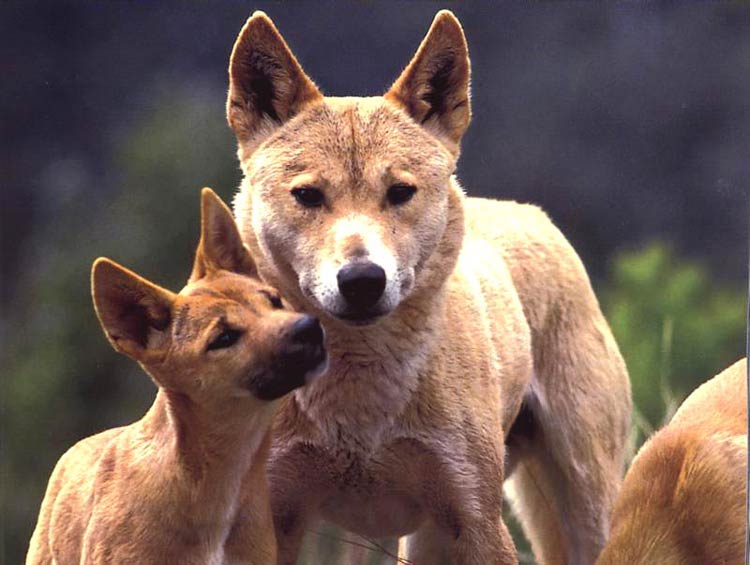
Fossil record
The fossil record of Dingoes is relatively limited, but they are believed to have originated from Southeast Asian ancestors that were brought to Australia by early human settlers over 4000 years ago.
Archaeological evidence indicates that Dingoes were present in Australia by around 3500 years ago, and their remains have been found at several ancient sites across the continent.
Fossil evidence of Dingoes has also been found in other parts of Southeast Asia, providing evidence of their historical distribution and evolution in the region.
Despite their relatively limited fossil record, Dingoes are considered to be an important part of Australia’s cultural and natural heritage, and their status as an iconic species has led to ongoing efforts to study and protect wild populations.
In conclusion, the fossil record of Dingoes provides evidence of their origin and evolution, as well as their early presence in Australia and Southeast Asia, and their ongoing significance as an important part of Australia’s cultural and natural heritage.
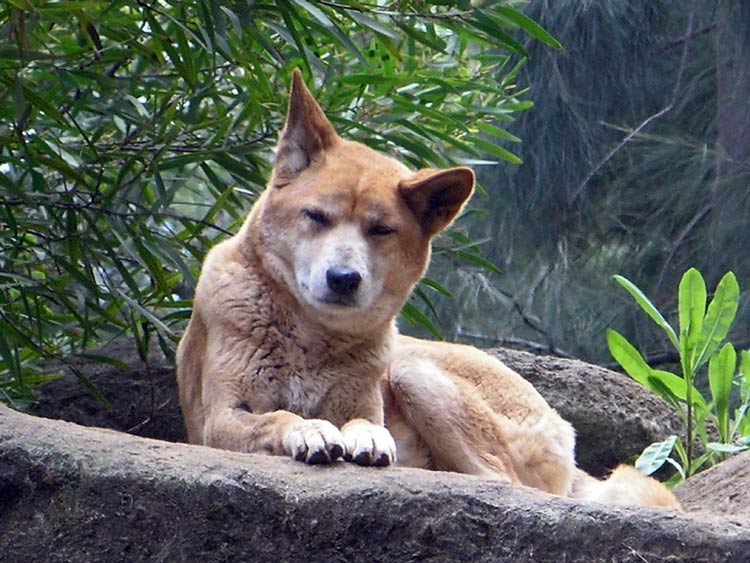
Domestic status
The domestic status of Dingoes is somewhat complex and has been the subject of ongoing debate and research. While Dingoes are often considered to be wild animals, they have also been domesticated in certain parts of the world, particularly in Southeast Asia and parts of Australia.
In some communities in Southeast Asia, Dingoes have been kept as pets or trained to assist with hunting and herding. In these regions, Dingoes are often bred with other dog breeds, leading to the development of domestic populations that retain some of their wild characteristics.
In Australia, Dingoes have been kept as pets by some Indigenous communities for centuries, and are also sometimes used for hunting or for guarding livestock.
Despite their domestic status in some regions, Dingoes are generally considered to be wild animals in Australia and are protected by conservation laws in many parts of the country.
In conclusion, the domestic status of Dingoes is complex, with some populations living as domesticated pets and others living as wild animals. Regardless of their domestic status, Dingoes are considered an important part of the cultural and natural heritage of the regions in which they occur.
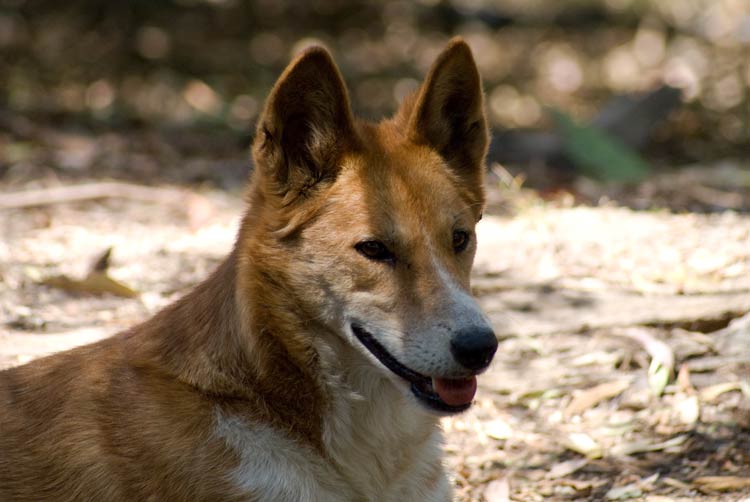
Etymology of the name
The word “Dingo” is believed to have originated from the language of the Indigenous Australians, specifically the Dharug people of New South Wales. The exact origin of the word is uncertain, but it is thought to have been used by the Indigenous Australians to describe wild dogs for thousands of years prior to European colonization.
The first recorded use of the word “Dingo” by Europeans was in the late 17th century. It was used to describe the wild dogs of Australia, and the term quickly gained widespread use among settlers, naturalists, and travelers. Today, the word “Dingo” is commonly used to refer to the wild dog of Australia and is recognized as a part of the country’s cultural heritage.
In scientific literature, the Dingo is officially known as Canis familiaris dingo. This classification recognizes the Dingo as a subspecies of the domestic dog, Canis familiaris.
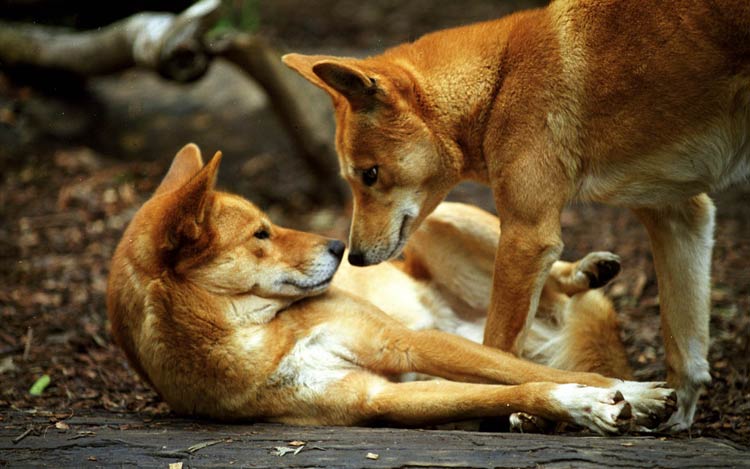
Basic Facts About Dingo (Canis familiaris)
- Taxonomy
Dingoes belong to the species Canis familiaris and are considered a subspecies of the domestic dog. - Origin
Dingoes are believed to have originated from domesticated dogs that were brought to Australia by Asian seafarers around 4000 years ago. - Physical Characteristics
Dingoes have a distinctive appearance, with a reddish-yellow coat, pointy ears, and a bushy tail. They typically weigh between 20-30 kilograms (44-66 lbs) and measure about 60-70 centimeters (24-28 inches) from their shoulder to the ground. - Diet
Dingoes are opportunistic hunters and feed on a variety of prey, including small mammals, reptiles, birds, and even kangaroos. - Social Structure
Dingoes are social animals and typically live in packs, although some individuals may also lead solitary lives. - Communication
Dingoes are known for their distinctive howl, which they use to communicate with other members of their pack. - Range
Dingoes are native to Australia and can be found throughout the country, although their populations are declining due to habitat loss and interbreeding with domestic dogs. - Threats
Dingoes are considered a threatened species, with their populations declining due to habitat loss and interbreeding with domestic dogs. - Conservation
Conservation efforts are underway to protect and conserve Dingoes, including measures to control interbreeding with domestic dogs and to preserve their habitat.
These are just a few of the basic facts about Dingoes, a fascinating and unique wild dog that plays an important role in the ecosystem of Australia.
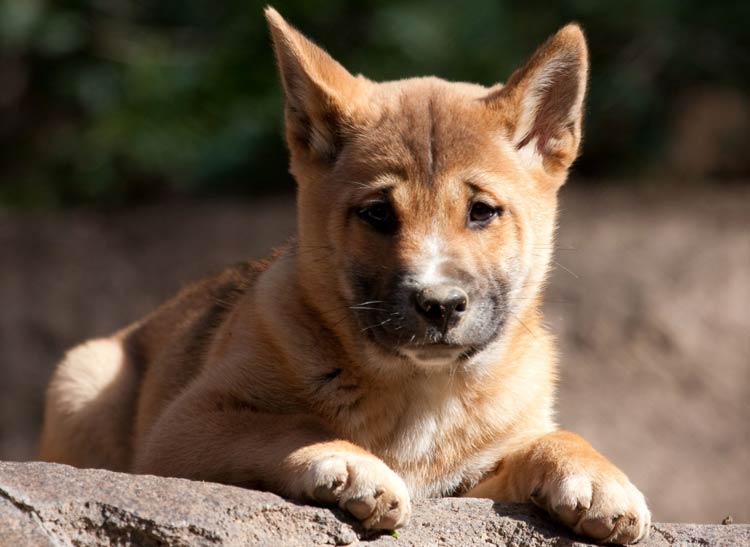
Distribution and habitat
The Dingo is native to Australia and can be found throughout the country, although their populations have declined significantly in recent decades. Historically, Dingoes were found across much of the continent, from the arid interior to the coastal regions. Today, they are most commonly found in remote areas of the Outback, such as the deserts of Central Australia and the bushlands of Queensland.
Dingoes are highly adaptable and can thrive in a variety of habitats, from arid deserts to tropical forests. However, their populations have declined due to habitat loss, as well as interbreeding with domestic dogs, which has reduced their genetic diversity and their ability to adapt to changing environments.
In terms of their preferred habitat, Dingoes tend to occupy areas with a mix of open spaces for hunting and cover for resting and hiding. They are often found near water sources, such as rivers and lakes, and are attracted to areas with abundant prey, such as small mammals and reptiles.
Despite the threats they face, Dingoes continue to play a vital role in the ecosystem of Australia, serving as top predators and helping to maintain balance in the food chain. Conservation efforts are underway to protect and conserve Dingoes, including measures to preserve their habitat and control interbreeding with domestic dogs.

Role in Australia’s ecosystem
The Dingo plays a crucial role in the ecosystem of Australia. As a top predator, they help to control the populations of smaller animals, such as rabbits, and prevent them from overgrazing and damaging the vegetation. This helps to maintain the balance of the ecosystem and preserve the health of the land.
In addition, Dingoes help to control the populations of other predators, such as feral cats and foxes, which can have a negative impact on native species and the ecosystem as a whole. By limiting the populations of these invasive predators, Dingoes help to protect and conserve Australia’s unique biodiversity.
Dingoes also play a role in shaping the landscape through their hunting and scavenging activities. For example, they may dig holes in search of prey, creating homes for other small animals and insects. They may also help to disperse the seeds of some plant species through their droppings.
Despite their important role in the ecosystem, Dingoes are considered a threatened species, with their populations declining due to habitat loss and interbreeding with domestic dogs. Conservation efforts are underway to protect and conserve Dingoes, including measures to preserve their habitat and control interbreeding with domestic dogs.
In conclusion, the Dingo is an important species in the ecosystem of Australia, playing a crucial role as a top predator and helping to maintain the balance of the food chain and preserve the health of the land.
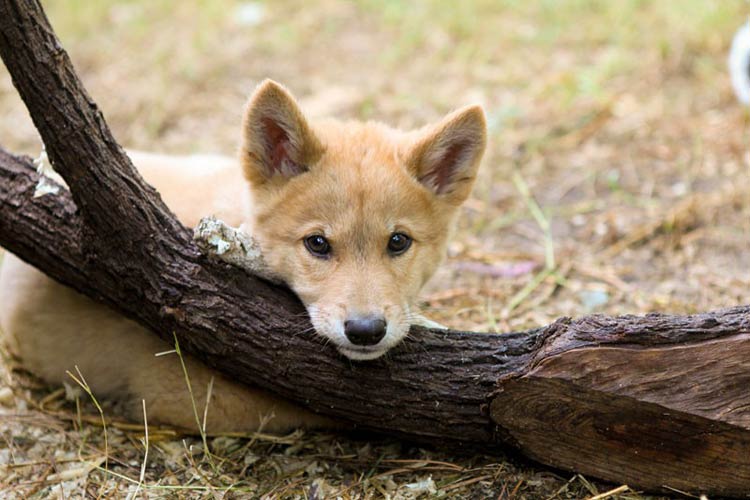
Characteristics
Appearance, size
The Dingo is a medium-sized wild dog with a distinctive appearance. They have a short, reddish-yellow coat, which can vary in color from light cream to deep red, and often have black markings on their tails and legs. Dingoes have pointy ears and a bushy tail, which they hold upright when alert.
In terms of size, Dingoes typically weigh between 20-30 kilograms (44-66 lbs) and measure about 60-70 centimeters (24-28 inches) from their shoulder to the ground. They have a lean, muscular build, with long legs and a deep chest, which makes them well-suited for hunting and running.
Dingoes have sharp, powerful jaws and teeth, which they use to hunt and kill their prey. They also have keen senses, including a strong sense of smell and excellent hearing, which they use to locate and track their prey.
In terms of their overall appearance, Dingoes are often described as having a wild, rugged look, with a keen, intelligent expression in their eyes. They are an important species in the ecosystem of Australia and play a crucial role as a top predator.
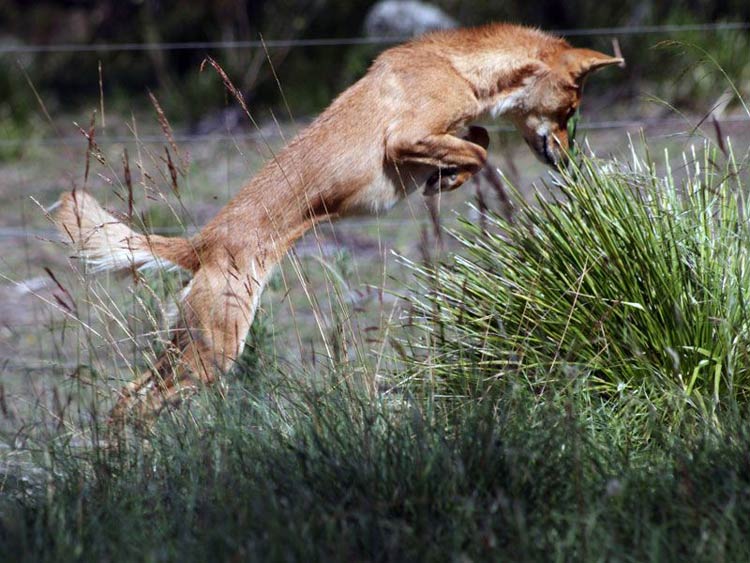
Behavior, Lifestyle and Ecology
The behavior and lifestyle of Dingoes are shaped by their ecology and the environment in which they live. Dingoes are social animals and live in packs, typically consisting of a dominant pair and their offspring. The pack structure is hierarchical, with the dominant pair maintaining their position through aggressive behavior and other displays of dominance.
Dingoes are primarily nocturnal animals and hunt at night, using their keen senses to locate and track their prey. They are highly adaptable hunters and will eat a variety of prey, including small mammals, reptiles, and birds. They may also scavenge for food, feeding on the remains of other animals, such as kangaroos and wallabies.
In terms of their behavior, Dingoes are generally shy and wary of humans. They are intelligent and resourceful animals and are able to adapt to changing environments and find food in a variety of habitats.
In terms of their ecology, Dingoes play a crucial role in the ecosystem of Australia, serving as top predators and helping to control the populations of smaller animals, such as rabbits, and prevent them from overgrazing and damaging the vegetation. They also help to control the populations of other predators, such as feral cats and foxes, which can have a negative impact on native species and the ecosystem as a whole.
Despite their important role in the ecosystem, Dingoes are considered a threatened species, with their populations declining due to habitat loss and interbreeding with domestic dogs. Conservation efforts are underway to protect and conserve Dingoes, including measures to preserve their habitat and control interbreeding with domestic dogs.
In conclusion, the behavior, lifestyle, and ecology of Dingoes are shaped by their environment and their role as top predators in the ecosystem of Australia. They are intelligent, resourceful animals that play a crucial role in maintaining the balance of the food chain and preserving the health of the land.
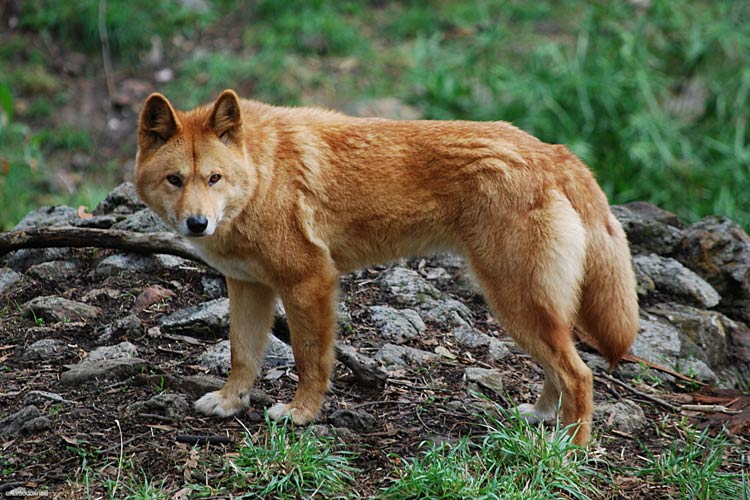
Migration
The migration patterns of Dingoes are not well-studied, but they are believed to have relatively small home ranges and to be primarily sedentary.
In the wild, Dingoes typically establish territories and remain in the same area for most of their lives, only traveling long distances in response to changes in food availability or other environmental factors.
In some regions, such as parts of Australia, Dingoes are known to travel long distances in search of food, particularly during periods of drought or other environmental stress. These migrations can bring Dingoes into conflict with humans, as they may prey on livestock or other domestic animals.
Domesticated Dingoes, particularly those kept as pets, are typically less likely to migrate and tend to stay within a small area near their home.
In conclusion, the migration patterns of Dingoes can vary depending on their habitat and environment, with wild populations tending to be relatively sedentary and domestic populations remaining close to their home. Nevertheless, Dingoes are known to travel long distances in response to changes in food availability or other environmental factors.
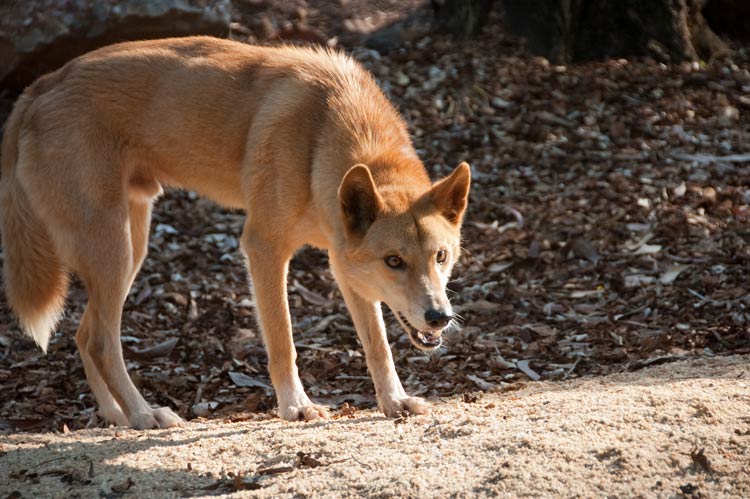
Community
The Dingo community refers to the social structure of Dingoes and their relationships with each other. Dingoes are social animals and live in packs, typically consisting of a dominant pair and their offspring. The pack structure is hierarchical, with the dominant pair maintaining their position through aggressive behavior and other displays of dominance.
Within the pack, Dingoes have strong social bonds and work together to hunt and raise their young. They communicate with each other through vocalizations, such as barks, growls, and whines, as well as body language and scent marking.
Dingoes also interact with other species in their ecosystem, including their prey and other predators. They play a crucial role in the ecosystem as top predators, helping to control the populations of smaller animals and preventing them from overgrazing and damaging the vegetation.
In addition, Dingoes may interact with domestic dogs and other domestic animals, especially in areas where their habitats overlap. In some cases, Dingoes may interbreed with domestic dogs, which can lead to a decline in the genetic diversity and integrity of the Dingo population.
In conclusion, the Dingo community refers to the social structure of Dingoes and their relationships with each other and other species in their ecosystem. Dingoes are social animals that live in packs and play a crucial role in the ecosystem as top predators. Their relationships and interactions with other species shape their behavior and impact the balance of the food chain.

Communication
Dingoes communicate with each other using a variety of vocalizations, body language, and scent marking. Some of the most common vocalizations used by Dingoes include barks, growls, whines, and howls. These vocalizations serve different purposes, including warning signals, expressions of dominance, and calls to other members of the pack.
In addition to vocalizations, Dingoes also communicate through body language, such as tail wagging, raised hackles, and crouching. These body language signals help to convey dominance, submission, and other social cues among members of the pack.
Dingoes also use scent marking to communicate with each other and establish their territory. They mark their territory by urinating and leaving their scent on trees, rocks, and other objects. This helps to establish their presence and deter other Dingoes from entering their territory.
In conclusion, Dingoes communicate with each other using a variety of vocalizations, body language, and scent marking. These forms of communication serve to convey social cues, establish dominance and territory, and maintain the cohesion of the pack. The ability to communicate effectively is an important part of Dingo behavior and helps to ensure their survival and success as a species.

Hunting and Diet
Dingoes are opportunistic hunters and feed on a variety of prey, including small mammals, reptiles, birds, and fish. They are highly adaptable and will eat whatever is available in their environment, including carrion (dead animals) and other scavenged food.
Dingoes hunt primarily at night, using their keen senses of hearing, smell, and vision to locate and track their prey. They are skilled hunters and often work together as a pack to maximize their chances of success.
In terms of their diet, Dingoes have a high protein requirement and consume a significant amount of meat in their diet. However, they are also known to consume other food items, such as fruits and vegetables, especially during times when their preferred prey is scarce.
Dingoes play a crucial role in the ecosystem as top predators, helping to control the populations of smaller animals and prevent them from overgrazing and damaging the vegetation. By controlling these populations, Dingoes help to maintain the balance of the food chain and preserve the health of the land.
In conclusion, Dingoes are opportunistic hunters that feed on a variety of prey. They hunt primarily at night and have a high protein requirement, consuming a significant amount of meat in their diet. Their role as top predators helps to control the populations of smaller animals and maintain the balance of the food chain in the ecosystem.
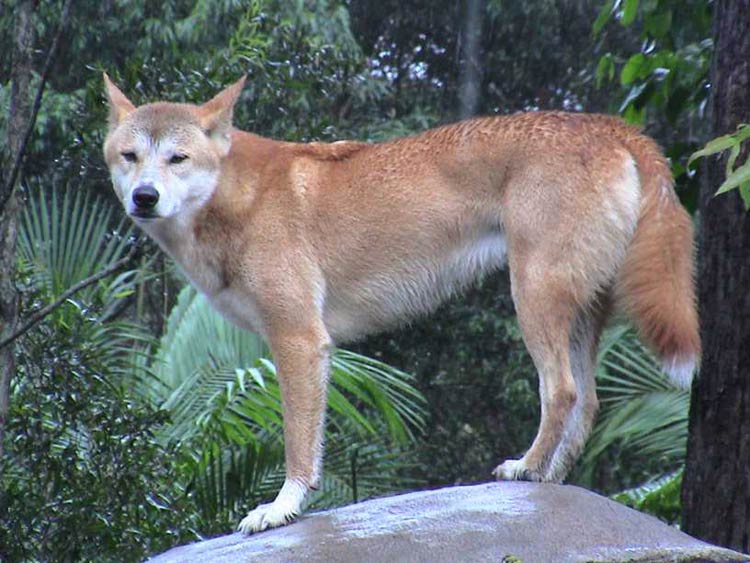
Reproduction and Parenting
Dingoes reproduce once a year, with the breeding season typically occurring between March and June. Female Dingoes come into heat for 2-3 weeks during this time and are receptive to mating.
The gestation period for Dingoes is approximately 63 days, after which the female gives birth to a litter of 2-6 pups. The pups are born blind and deaf, and rely on their mother for warmth, nourishment, and protection.
Both the mother and father Dingo play important roles in raising and caring for the pups. The mother provides the pups with milk and protects them from danger, while the father helps to provide food for the pack. As the pups grow, they are gradually introduced to solid food and become involved in hunting and other pack activities.
In terms of parenting behavior, Dingoes are known for their strong bonds with their offspring and the importance they place on raising and caring for their young. The pack works together to raise and protect the pups, and the strong social bonds that develop among pack members play a crucial role in the survival and success of the pups.
In conclusion, Dingoes reproduce once a year, with a gestation period of approximately 63 days. Both the mother and father play important roles in raising and caring for the pups, and the pack works together to ensure the survival and success of the next generation. The strong social bonds that develop among pack members are a key part of Dingo behavior and play a crucial role in their reproductive success.
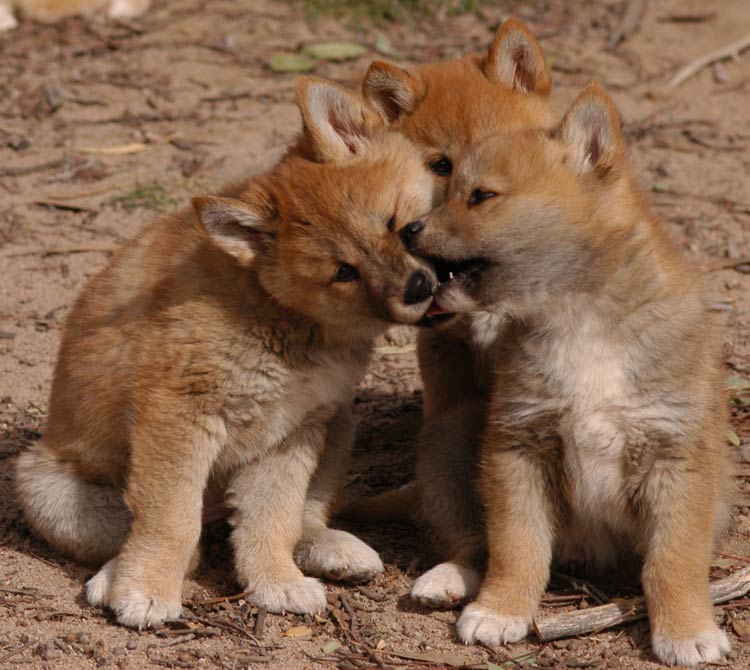
Predators and Threats
Dingoes have few natural predators in the wild, but their primary threat comes from humans. Dingoes are often hunted and persecuted by farmers and ranchers due to their potential to prey on livestock. In some areas, Dingoes are also trapped, poisoned, and shot in an effort to reduce their populations and protect livestock.
In addition to human persecution, Dingoes also face threats from interbreeding with domestic dogs. This hybridization dilutes the genetic purity of the Dingo population and can compromise their status as a distinct species.
The conservation status of Dingoes is a matter of ongoing debate, with some organizations considering them to be a threatened species while others classify them as a pest. In some areas, conservation efforts are underway to protect and preserve wild Dingo populations, including captive breeding programs and measures to reduce interbreeding with domestic dogs.
In conclusion, Dingoes have few natural predators but face significant threats from human persecution and interbreeding with domestic dogs. Their conservation status is a matter of ongoing debate, and conservation efforts are underway in some areas to protect and preserve wild Dingo populations.

Interactions with Humans
Dingoes have a complex and often contentious relationship with humans. While they have been associated with humans for thousands of years, their wild nature and tendency to prey on livestock have made them the subject of ongoing conflict and control efforts.
In some parts of Australia, Dingoes are considered a valuable part of the cultural and natural heritage, and efforts are underway to protect and conserve wild populations. In other areas, Dingoes are viewed as a pest and are actively hunted and controlled.
In addition to their role as livestock predators, Dingoes have also been known to attack and kill humans, particularly children. However, such attacks are rare and typically occur when Dingoes have become habituated to humans or are in close proximity to human settlements.
In conclusion, Dingoes have a complex and often contentious relationship with humans, with attitudes towards them ranging from conservation and protection to control and persecution. While they have been associated with humans for thousands of years, their wild nature and tendency to prey on livestock have made them the subject of ongoing conflict and control efforts.

Population
The population of Dingoes in the wild is difficult to estimate, as they occupy a vast and remote range that spans much of Australia. Some estimates suggest that there are as few as 100,000 wild Dingoes in Australia, while others put the number closer to 500,000.
In addition to the wild population, there are also captive populations of Dingoes that are kept as pets or used in breeding programs. These captive populations are subject to different threats and challenges, including interbreeding with domestic dogs and loss of genetic diversity.
The population of Dingoes is thought to be declining in some areas due to a combination of factors, including human persecution, hybridization with domestic dogs, and loss of habitat. Conservation efforts are underway in some areas to protect and conserve wild Dingo populations, including captive breeding programs and measures to reduce interbreeding with domestic dogs.
In conclusion, the population of Dingoes in the wild is difficult to estimate, with estimates ranging from 100,000 to 500,000 individuals. The population is thought to be declining in some areas due to a combination of factors, and conservation efforts are underway in some areas to protect and conserve wild Dingo populations.
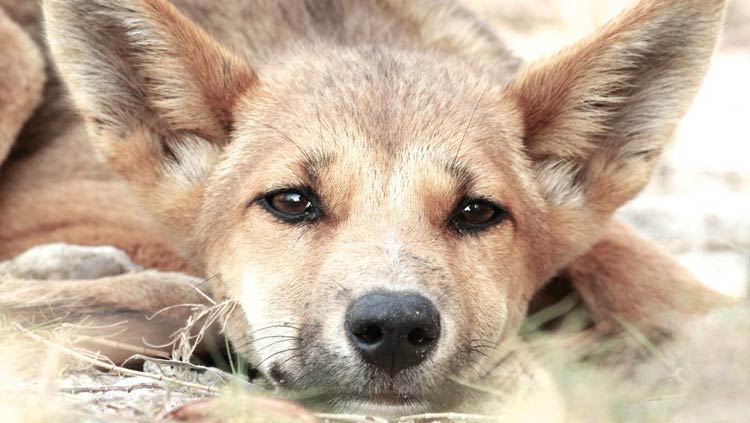
Status and conservation
The status of Dingoes as a species is a matter of ongoing debate and research. Some organizations consider Dingoes to be a distinct species, while others classify them as a subspecies of the domestic dog.
In terms of conservation, Dingoes face significant threats in some areas, including human persecution, hybridization with domestic dogs, and loss of habitat. In some areas, conservation efforts are underway to protect and conserve wild Dingo populations, including captive breeding programs and measures to reduce interbreeding with domestic dogs.
Despite these efforts, the future of wild Dingo populations remains uncertain. In addition to the threats they face, Dingoes also play a controversial role in Australia’s ecosystem, and their presence has far-reaching impacts on the populations of other native species.
In conclusion, the status of Dingoes as a species is a matter of ongoing debate, and their conservation status is subject to ongoing research and monitoring. Despite conservation efforts in some areas, the future of wild Dingo populations remains uncertain, and their role in Australia’s ecosystem continues to be a subject of ongoing discussion and research.

In culture
Dingoes have played an important role in the culture and mythology of many of the communities in which they live.
In Indigenous cultures of Australia, Dingoes are often seen as powerful and respected animals, and are incorporated into traditional stories and cultural practices. In some communities, Dingoes are considered to be the companions of hunters and are believed to possess spiritual powers.
In other parts of the world, Dingoes have been depicted in popular culture as fearsome predators, often portrayed as wild and untamed animals that pose a threat to humans. This image of the Dingo has been perpetuated in films, books, and other media.
Despite these differing cultural perspectives, Dingoes are generally seen as an important part of the cultural heritage of the regions in which they occur, and their role in cultural traditions and mythology continues to be celebrated by many communities.
In conclusion, Dingoes have played an important role in the culture of many of the communities in which they live, and their presence continues to be celebrated and recognized in cultural traditions and mythology.

Attacks on humans
Attacks by Dingoes on humans are relatively rare, but they have occurred in some regions and can pose a serious threat to public safety.
In Australia, where Dingoes are considered to be wild animals, attacks are most likely to occur when Dingoes are habituated to human presence and become aggressive or lose their fear of humans. This can happen when Dingoes are fed by humans, leading to an increased risk of aggressive behavior and attacks.
In some cases, Dingoes may also attack humans in self-defense or in response to perceived threats, particularly if they are cornered or trapped.
Despite these risks, the majority of Dingoes do not pose a threat to human safety and can coexist with humans in many parts of their range.
To minimize the risk of Dingo attacks, it is important to be cautious when visiting areas inhabited by Dingoes and to avoid feeding them or encouraging them to become habituated to human presence.
In conclusion, while attacks by Dingoes on humans are relatively rare, they can pose a serious threat to public safety and it is important to be cautious and aware of the risks when visiting areas inhabited by Dingoes.
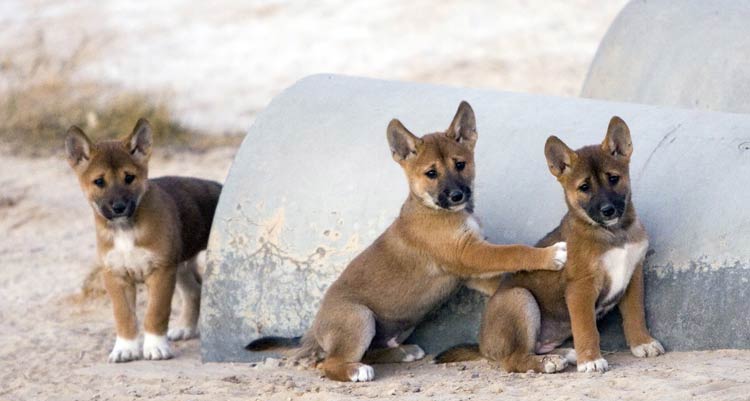
Dingoes in movies
Dingoes have appeared in a number of movies and television shows over the years, often portrayed as fierce and dangerous predators. Some of the most notable depictions of Dingoes in film include:
- “The Dingo” (1981) – a film about a dingo that is believed to have killed a young child in the Australian Outback.
- “The Maddest Dog in Texas” (1978) – a film about a dingo that escapes from a Texas prison and terrorizes the countryside.
- “Rolf Harris: The Courtroom Concerts” (1997) – a television movie about a dingo that is put on trial for killing a child, with musical interludes performed by Rolf Harris.
- “Australia” (2008) – a film set in the Australian Outback that features a dingo as a central character.
In these and other movies, Dingoes are often portrayed as wild and unpredictable animals that pose a threat to humans. However, this portrayal is not always accurate, as Dingoes are not naturally aggressive towards people and attacks on humans are rare.
While Dingoes have been featured in a number of movies and television shows over the years, these depictions often do not accurately reflect the behavior or biology of these fascinating and unique animals.

Dingo (Canis familiaris) in numbers
- Length
Dingoes typically measure between 61-69 cm (24-27 in) in length, not including their tail, which can add another 25-40 cm (10-16 in) to their overall length. - Height
Dingoes stand around 52 – 60 cm (1ft 8in – 1ft 12in) at the shoulder. - Weight
Dingoes typically weigh between 18-30 kg (40-66 lbs). - Lifespan
In the wild: 3–5 years with few living past 7–8 years. Some have been recorded living up to 10 years. In captivity: 14–16 years (record 20 years) - Range
Dingoes are found throughout much of Australia, from the arid interior to the coastal regions. - Population
The population of Dingoes in the wild is difficult to estimate, with estimates ranging from 100,000 to 500,000 individuals. - Conservation status
The conservation status of Dingoes is subject to ongoing research and monitoring, with some populations facing significant threats and others protected through conservation efforts.
In conclusion, these are some key numbers related to Dingoes, including their size, distribution, population, and conservation status.
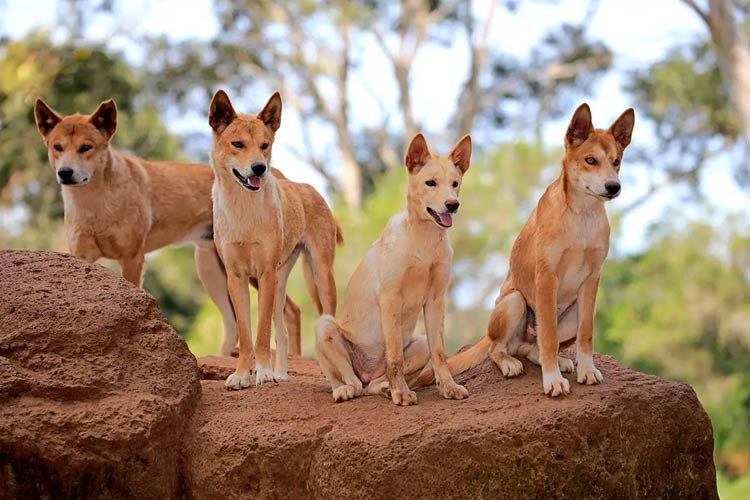
Details / dimensions / size
- Length with a tail: 117 – 154 cm (3ft 10.1in – 5ft 0.6in)
- Wild male: 125 cm (4ft 1in)
- Captive male: 136 cm (4ft 5.5in)
- Wild Female on average: 122 cm (4ft)
- Captive female: 133 cm (4ft 4.4in)
- Height at withers: 52 – 60 cm (1ft 8in – 1ft 12in)
- Wild male: 59 cm (23 in)
- Captive male: 56 cm (22 in)
- Wild female: 56 cm (22 in)
- Captive female: 53 cm (21 in)
- Tail length: 21-36 cm (8.3in – 1ft 2.2in)
- Weight: 13 – 20 kg (28.7 – 44 lb); record individuals: 27-35 kg (59.5 – 77.2 lb)
- Wild male: 15.8 kg (35 lb)
- Captive male: 18.9 kg (42 lb)
- Wild female: 14.1 kg (31 lb)
- Captive female: 16.2 kg (36 lb)
- Maximum speed: 60 km/h (37 mph)
- Lifespan: 14 – 20 years
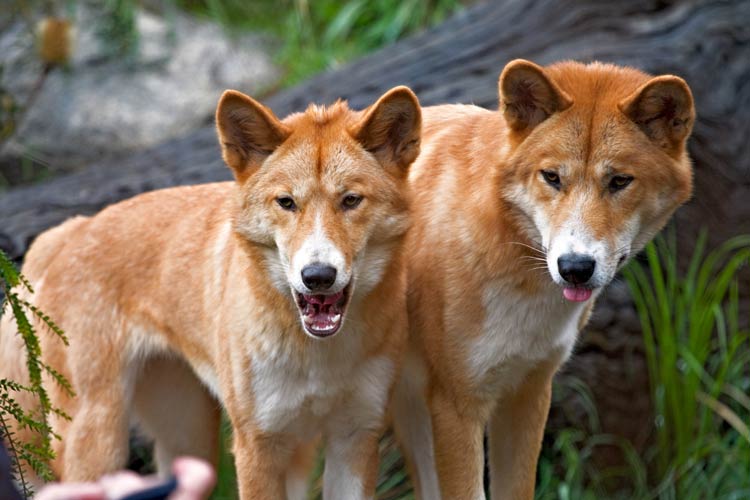
Interesting facts about Dingo (Canis familiaris)
- Origin
Dingoes are believed to have originated from Southeast Asia, and were brought to Australia by early human settlers over 4000 years ago. - Unique traits
Dingoes are unique among canids in that they do not bark, but instead communicate through a range of vocalizations, including growls, whines, and howls. - Wild dog
Dingoes are considered the largest land predator in Australia and play an important role in the ecosystem as apex predators, helping to control populations of smaller mammals and reptiles. - Hybridization
Dingoes are known to hybridize with domestic dogs, which can result in the loss of genetic diversity and can also pose a threat to native wildlife populations. - Iconic symbol
Dingoes have become an iconic symbol of Australia, and are often depicted in popular culture, including films, books, and artwork. - Protective mothers
Female Dingoes are known to be fiercely protective of their young, and will defend their dens and pups against potential predators, including humans. - Diet
Dingoes are opportunistic predators and feed on a wide range of prey, including small mammals, reptiles, birds, and even fish and carrion. - Pack hunters
Unlike other species of canids, Dingoes are known to hunt in packs, which allows them to take down larger prey such as kangaroos and wallabies.
These are just a few of the many interesting facts about Dingoes, from their origin and unique vocalizations to their role in Australia’s ecosystem and status as an iconic symbol.
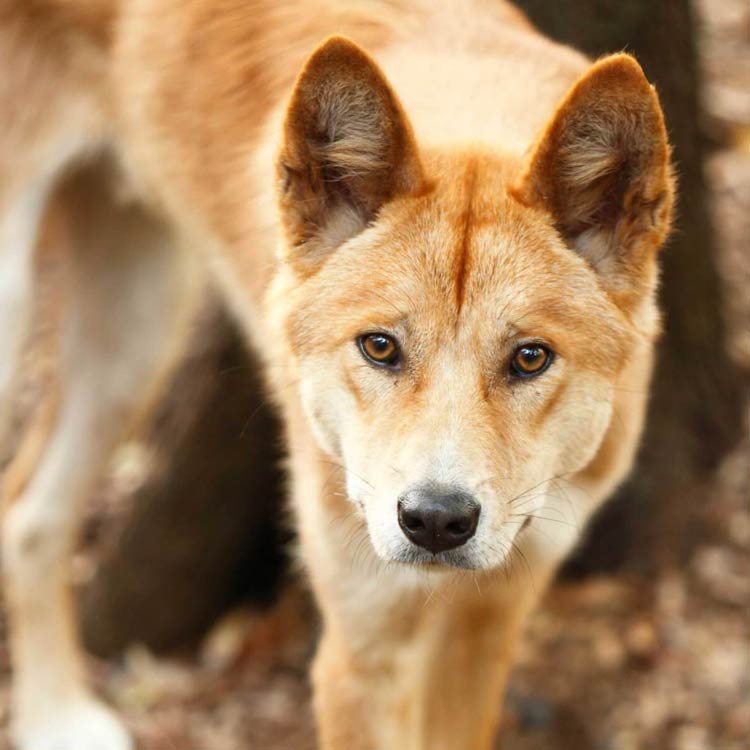
Q&A (questions and answers) about Dingo (Canis familiaris)
Q: What is a Dingo?
A: A Dingo is a type of wild dog found in Australia. It is believed to have originated from Southeast Asian ancestors brought to Australia by early human settlers over 4000 years ago.
Q: How do Dingoes differ from domestic dogs?
A: Dingoes are considered a distinct species from domestic dogs and have evolved differently over time. Dingoes are generally larger and have a more powerful build than domestic dogs, and are also known for their unique vocalizations, which include growls, whines, and howls, but not barking.
Q: What is the conservation status of Dingoes?
A: The conservation status of Dingoes is subject to ongoing research and monitoring, with some populations facing significant threats and others protected through conservation efforts. Some populations of Dingoes are considered at risk, while others are protected by conservation programs aimed at preserving wild populations.
Q: What do Dingoes eat?
A: Dingoes are opportunistic predators and feed on a wide range of prey, including small mammals, reptiles, birds, and even fish and carrion.
Q: Do Dingoes live in packs?
A: Yes, Dingoes are known to live in packs and are considered pack hunters, which allows them to take down larger prey such as kangaroos and wallabies.
Q: How do Dingoes communicate?
A: Dingoes communicate through a range of vocalizations, including growls, whines, and howls, but not barking, which is unique among canids.
These are some of the most frequently asked questions and answers about Dingoes, including information about their physical characteristics, behavior, and ecology.

Recommended
- African lion
- Asian lion
- African elephant
- African forest elephant
- Asian elephant
- Parrots
- Giant anteater
- Giraffe
- Gorillas
- Zebroid
- Zebra

